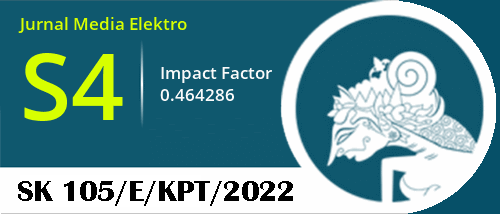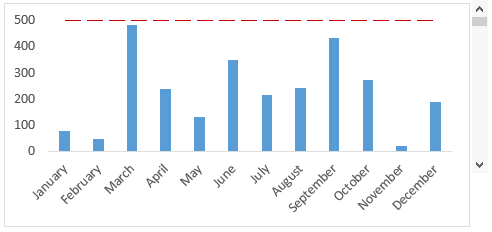PENGGUNAAN MIKROKONTROLER UNTUK MENDETEKSI ERROR COUNTING DAN DISTURB PADA AXLE COUNTER ALTPRO
Abstract
Axle counter is an important component in controlling train traffic. So far, error counting and disturb disturbances can only be seen in the Equipment Room and require different handling. This study develops a tool that provides fast notification of the type of disturbance on the track to the Negative Check Officer (PNC) smartphone. This tool uses an atmega 2560, ESP8266 Wemos D1 Mini Pro, PC817 optocoupler, Light Dependent Resistor sensor, and an application created in Android studio. This study uses the Research & Development Method to produce and test the effectiveness of the product. After being tested 55 times, this tool was able to send disturbance notifications with 91% success. The average internet speed in the Equipment Room is 11.2 Mbps and on smartphones 10.10 Mbps. The average notification delivery time is 2.097 seconds. This system is expected to make it easier for PNC to handle disturbances on the track..
Keywords: Axle counter, Disturb, Error counting, Notification.
Downloads
References
[2] P. KAI, Axle counter altpro. 2013.
[3] S. Oktafian Nabilla and E. Ariyanto, “Implementasi Optocoupler Pc817 Dan Relay Sebagai I/O Sistem Remote Reset Axle Counter Az S 350 U Menggunakan Stm32F103C8T6 Dengan Ethernet Client Untuk Hubungan Stasiun Weleri-Krengseng,” Epsil. J. Electr. Eng. Inf. Technol., vol. 20, no. 1, pp. 72–88, 2022, doi: 10.55893/epsilon.v20i1.82.
[4] F. Nuraeni and I. Nurfajri, “Notifikasi network intrusion detection system menggunakan media aplikasi telegram (studi kasus: kantor imigrasi tasikmalaya),” J. Sist. Inf. dan Teknol. Inf. STMIK Dipanegara, vol. 6, no. 1, pp. 1–5, 2017, [Online]. Available: www.snort.org.
[5] R. Andri, N. A. O. Saputri, and M. Akbar, “Sistem notifikasi tugas akhir universitas bina darma berbasis mobile,” Sistemasi, vol. 9, no. 1, p. 155, 2020, doi: 10.32520/stmsi.v9i1.630.
[6] Saidi and N. Hidayat, “Penerapan teknologi smart grid dalam instalasi listrik rumah,” 2020.
[7] F. D. Rumagit, J. O. Wuwung, S. R. U. . Sompie, and B. . Narasiang, “Perancangan sistem switching 16 lampu secara nirkabel menggunakan remote control,” E-Journal Tek. Elektro Dan Komput., vol. 1, no. 2, pp. 1–5, 2020.
[8] S. Utama, A. Mulyanto, M. Arif Fauzi, and N. Utami Putri, “Implementasi sensor light dependent resistor (ldr) dan lm35 pada prototipe atap otomatis berbasis arduino,” CIRCUIT J. Ilm. Pendidik. Tek. Elektro, vol. 2, no. 2, pp. 83–89, 2018, doi: 10.22373/crc.v2i2.3706.
[9] R. Safitri, H. Setiawan, N. Ariyanti, R. Dijaya, A. Info, and K. Kunci, “Rancang bangun aplikasi notifikasi dan geolocation pada pedagang keliling terdekat berbasis android,” Decod. J. Pendidik. Teknol. Inf., vol. 4, no. 1, pp. 52–64, 2024.
[10] I. Ramadhan, A. Hadi, and H. K. Saputra, “Pengembangan aplikasi monitoring server dari gangguan dan serangan dengan metode intrusion detection system berbasis android,” vol. 8, pp. 19598–19608, 2024.
[11] Desmira, D. Aribowo, G. Priyogi, and S. Islam, “Aplikasi sensor ldr (light dependent resistor) untuk efisiensi energi pada lampu penerangan jalan umum,” PROSISKO J. Pengemb. Ris. dan Obs. Sist. Komput., vol. 9, no. 1, pp. 21–29, 2022, doi: 10.30656/prosisko.v9i1.4465.
[12] A. P. Manullang, Y. Saragih, and R. Hidayat, “Implementasi nodemcu esp8266 dalam rancang bangun sistem keamanan sepeda motor berbasis iot,” JIRE (Jurnal Inform. Rekayasa Elektron., vol. 4, no. 2, pp. 163–170, 2021, [Online]. Available: http://e-journal.stmiklombok.ac.id/index.php/jireISSN.2620-6900
[13] F. Nadziroh, F. Syafira, and S. Nooriansyah, “Alat deteksi intensitas cahaya berbasis arduino uno sebagai penanda pergantian waktu siang-malam bagi tunanetra,” Indones. J. Intellect. Publ., vol. 1, no. 3, pp. 142–149, 2021.
[14] A. Iskandar, M. Muhajirin, and L. Lisah, “Sistem keamanan pintu berbasis arduino mega,” J. Inform. Upgris, vol. 3, no. 2, pp. 99–104, 2017, doi: 10.26877/jiu.v3i2.1803.
[15] S. Rabiah, “Penggunaan metode research and development dalam penelitian bahasa indonesia di perguruan tinggi,” no. April 2015, pp. 1–7, 2018, doi: 10.31227/osf.io/bzfsj.
This work is licensed under CC BY-SA 4.0

 Dea Pradita Rahmawati(1*)
Dea Pradita Rahmawati(1*)











